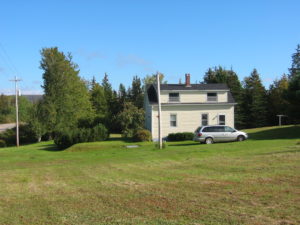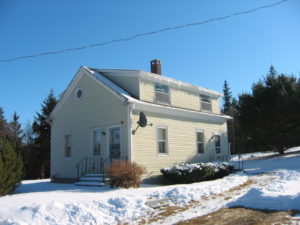© 2020 Donna Hébert, all rights reserved.

What is there about this place that draws new visitors not just once but lures them back over and over again? The beauty of the island is a given. It’s truly gorgeous, from coastlines to Cape Breton Highlands to inland river valleys and farmlands, but there’s something else here, something stronger. I think it’s the people.
Visitors to the island almost always want to come back. They crave that Cape Breton welcome. People wave at you when your car goes by, smile at you and tip their baseball cap if they see you on the sidewalk, stop for you even if you’re not in the crosswalk. People here are actively nice, even cordial, to strangers. If you live in a big American city, you almost never make eye contact on the street or on public transport. Here, you are seen and welcomed. While you are here, you’re part of the village – not just your wallet – but you. How refreshingly kind.
The first time I met someone from Cape Breton was back when I was a spring chicken, at the French Club in Waltham Massachusetts. (Capers refer to “the Boston States” when they talk about Massachusetts.) They introduced themselves and one of their first questions was “and what was your mother’s mother’s name? And your father’s mother?” We quickly established that my family was French and kept talking. Everyone you meet here is interested in your lineage because, in fact, you might be related. And if it turns out after all that you’re NOT a relative, they are truly disappointed. It happens here all the time. That kind of welcome keeps people coming back.
Bob began visiting the island with his late wife Jay and their daughters in the early 1980s. After a few trips around Nova Scotia, Cape Breton was such a success as a family vacation spot that they drove every year from their home in Torrington CT to the MacLeod Campground in Dunvegan. The campground owner was not really surprised when they bought a place a few miles down the road late in the late 1990s. “We rather thought you’d be doing that, didn’t we?” I guess the locals can tell when the island has claimed another heart.
 They went looking for a piece of land where they could build a tent platform. What they bought instead was a three-bedroom, one bathroom house on almost 3 acres, located on the main road to the Cabot Trail. I’m not telling what they paid for it in 1995 because you’d cry. I did. Since then, golf and tourism have much improved housing values on the island. Today, a decent house with good land, say an acre, will cost between $200-300K, and can run a lot more with bigger acreage or a snazzy water view. However, with Canadian currency today pegged at $.76 to the American dollar, you can see it’s a whisker of opportunity. A $200K house on the island would cost around US$152,000. Not too bad if you’re selling your American home to finance a life here (once you can legally live here full-time, that is), but you probably want to keep your snow-blower!
They went looking for a piece of land where they could build a tent platform. What they bought instead was a three-bedroom, one bathroom house on almost 3 acres, located on the main road to the Cabot Trail. I’m not telling what they paid for it in 1995 because you’d cry. I did. Since then, golf and tourism have much improved housing values on the island. Today, a decent house with good land, say an acre, will cost between $200-300K, and can run a lot more with bigger acreage or a snazzy water view. However, with Canadian currency today pegged at $.76 to the American dollar, you can see it’s a whisker of opportunity. A $200K house on the island would cost around US$152,000. Not too bad if you’re selling your American home to finance a life here (once you can legally live here full-time, that is), but you probably want to keep your snow-blower!
 Years ago, this house was a general store and even a post office and the locals still know it by the folks who built it a long time ago. About two-thirds is sloping lawn and the rest is spruce, birch, and maple forest, with no near neighbors except the main road, remarkably quiet in this COVID year. It’s a bucolic paradise in summer if you’re prepared for the bugs, a nice piece of land with a spring-fed well, lovely in spring and gorgeous in fall. Winter, the longest season (some locals say it’s spring), is for the hardy – the very hardy. Some older friends here flee to warmer climes in the worst of winter, others tough it out. And the islanders are tough. They have to be!
Years ago, this house was a general store and even a post office and the locals still know it by the folks who built it a long time ago. About two-thirds is sloping lawn and the rest is spruce, birch, and maple forest, with no near neighbors except the main road, remarkably quiet in this COVID year. It’s a bucolic paradise in summer if you’re prepared for the bugs, a nice piece of land with a spring-fed well, lovely in spring and gorgeous in fall. Winter, the longest season (some locals say it’s spring), is for the hardy – the very hardy. Some older friends here flee to warmer climes in the worst of winter, others tough it out. And the islanders are tough. They have to be!
Tomorrow I continue this essay with a look at what it took Bob and Jay to establish themselves here as more than property owners, to become Canadian citizens. Bob has shared stories and facts and photos and proofread every word!